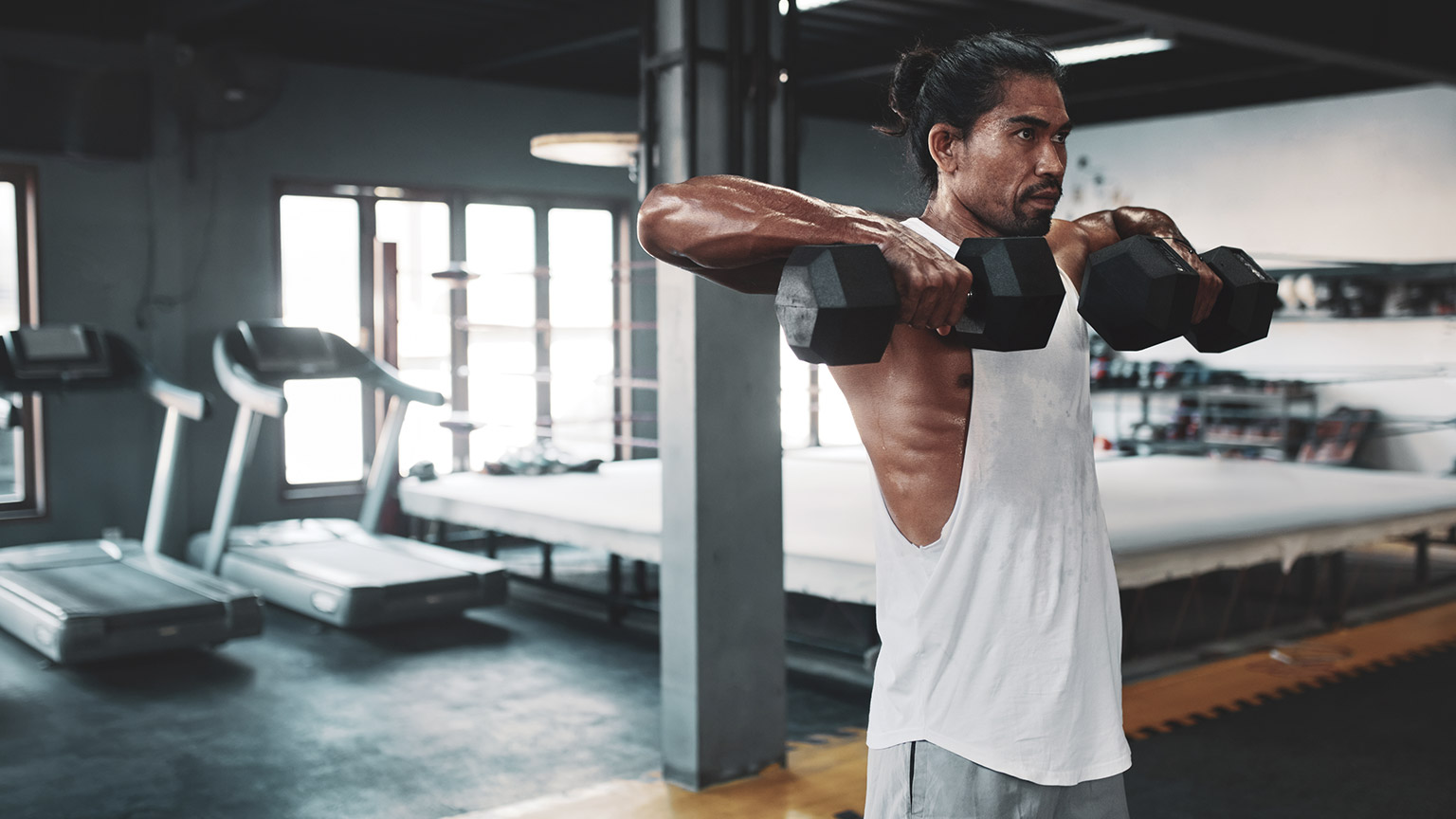You’ve learnt about client consultation and pre-screening, goal setting, testing, and exercise selection. Now it’s time to put it all together to learn how to create a programme for your clients.
Programme design is often said to be both an art and a science. It involves applying scientific principles and knowledge to create a programme that is safe, effective, and efficient for achieving specific fitness goals. However, there is also an art to designing a programme, as it requires a certain level of creativity and intuition to tailor the program to the individual's unique needs and preferences.
The science of programme design involves understanding concepts such as anatomy, physiology, and movement, as well as principles such as specificity, overload, progression, and individualisation. This scientific knowledge is essential for creating a programme based on evidence and tailored to the individual's goals and needs.
However, the art of programme design involves considering the individual's preferences, abilities, limitations, and psychological and emotional factors. A good trainer must communicate effectively, inspire and motivate clients, and adjust based on feedback.
In this topic, we’ll cover:
- Foundations, including training principles and FITT
- Creating a programme skeleton
- Modifying variables
- Resistance training
- Progress reviews
- Periodisation

When designing a programme, we need to ensure the programme is:
- Specific to the goals and aims of client
- Individualised to the client
- Sustainable and achievable for the client - have you managed the FITT principles appropriately
- Thorough, detailing all aspects including warm-up, mobility, activation, finisher, cool-down, and stretches
- Balanced (agonist/antagonist)
- Different from your competitors
- Designed in a professional way including layout
- Designed in a logical order
- Accompanied with an overall weekly training plan
You were introduced to some of these points in Exercise Prescription Part A. We’ll recap key training principles with respect to effective programme design before moving onto new concepts.
Sustainability
A trainer may prescribe the best programme in the world but if the client is not able to complete it, the programme is of no value. So how do you ensure a programme is sustainable for a client to give the best chance of programme adherence?
Before designing a programme you should:
- Know your client – goals, history, and how training will fit in with their life.
- Perform a needs analysis – compare goals, fitness assessment, and establish what is needed to get from point A to point B.
New trainers often over-prescribe and design programmes that a new client is simply not able to sustain. It’s also not appropriate or effective to try a bunch of exercises with a client to see what sticks and what happens. It's essential that you appropriately manage the FITT principles and consider 3 basic principles:
- Simplicity
- Specificity
- Progressive overload
Our bodies adapt to the physical demands placed on it, not to best intentions and wishes. A client’s success hinges on your decisions about what to work on work on, how often, and how hard (Spraul, 2021). Basically, have you used the FITT principles to create a sustainable programme that aligns with the information you discovered in the client consultation and fitness testing stages?
Simplicity
In programme design, simplicity refers to the idea of keeping the programme simple, straightforward, and easy to understand. This means avoiding overly complex exercises or workout routines that can be confusing or overwhelming for clients, especially those who are new to exercise.
Simplicity in programme design can have several benefits. Firstly, it can help to reduce the risk of injury by ensuring that clients perform exercises with proper form and technique. Simple exercises that are easy to understand and execute can be performed safely and effectively.
Secondly, simplicity can help to improve adherence to the programme. A simple and straightforward programme is easier for clients to follow and can help them to stay motivated and consistent with their workouts. If a programme is too complex or overwhelming, clients may become discouraged and give up on the programme altogether.
Finally, simplicity can help to save time and resources. By focusing on a few key exercises or movements that provide the most benefit, trainers can create a programme that is efficient and effective, without requiring a lot of time or equipment.
Specificity and individualisation
Specificity and individualisation are important principles to consider in programme design. Programmes need to be specific to the client’s goals and individualised to the client.
The principle of specificity highlights that exercise should be specific to the client's goals, needs, and capabilities, and that the results of a training programme will reflect the type of training completed.
The principle of individualisation is about tailoring the programme based on the individual themselves. Factors such as exercise experience (training age), progress, injuries, medical conditions, strengths, and weaknesses need to be at the forefront of our mind when designing a programme. E.g., we wouldn't give a beginner a multi-day split programme for their first programme.
When designing a programme, ask yourself if the programme is designed around your client’s:
- Direct goals
- In-direct goals (these are goals that you as a trainer can see is a need for your client but one that they haven't identified in the consultation, e.g., posture, poor mobility, and high stress)
- Individual capabilities
- Injuries and medical conditions
- Sport and/or activities
Progressive overload

The progressive overload principle is a basic training principle that means you need to increase the amount of stress on your body during exercise over time to continue progressing. This means gradually increasing the amount of weight you lift, the number of repetitions you perform, or the intensity and duration of your workouts. By doing this, your body adapts and becomes stronger, which allows you to continue making progress towards your fitness goals.
In simpler terms, the progressive overload principle means that to get stronger and fitter, you need to challenge your body by gradually increasing the difficulty of your workouts over time. When you are programming, manipulate the FIIT principles so that clients exercise above normal to create overload and therefore adaptations can occur. In practical terms, ensure that one of the variables (load, volume, duration, etc.) is always increasing with every iteration of training (Spraul, 2021).
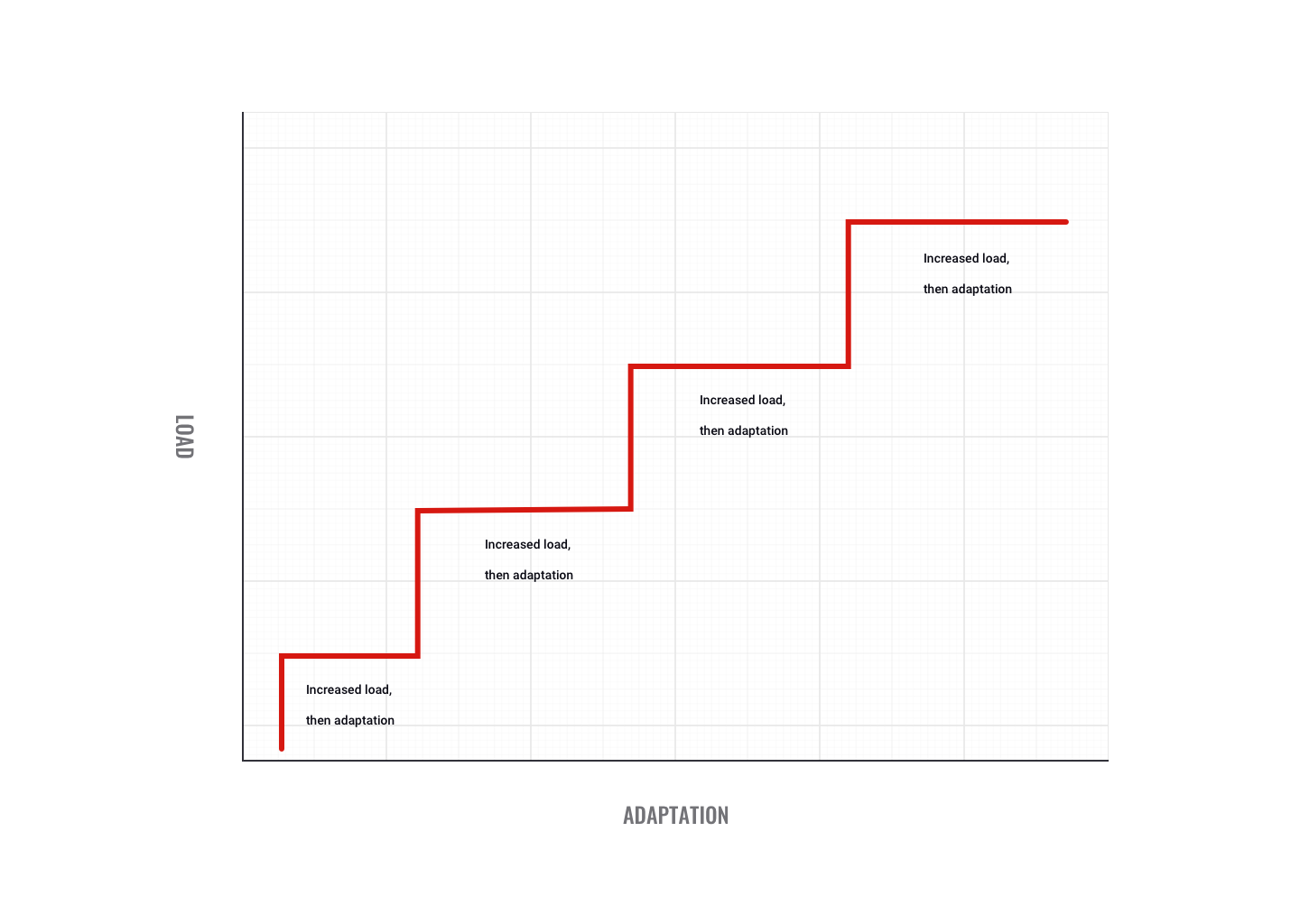
Keep in mind that training must be gradual and progressive. Too much overload can lead to fatigue and injury.
FITT principles
The first considerations for programme design need to be around the FITT principles:
- Frequency: How often my client trains over the week
- Intensity: How hard I push my client
- Time: How long my client trains for
- Type: The modality or modalities of training I use for my client
A quick recap: The FITT principles are used to guide the development of exercise programmes. Here's an example of how a personal trainer might apply the FITT principles to design a programme for a client:
- Frequency: The trainer and client agree on a workout schedule of 3 sessions per week.
- Intensity: Based on the client's fitness level and goals, the trainer determines that the client should exercise at a moderate intensity (e.g., if performing cardio training with your client, aim for 70-80% of their maximum heart rate) for most of their sessions. However, the trainer may also incorporate some high-intensity interval training (HIIT) or other forms of high-intensity exercise to challenge the client and improve their cardiovascular fitness.
- Time: The trainer plans for each session to last around 30-60 minutes, depending on the client's availability and fitness level.
- Type: The trainer selects exercises appropriate for the client's fitness level, goals, and preferences. E.g., they may incorporate activities such as resistance training, circuit training, CrossFit, long slow distance, fartlek, High-Intensity Interval Training (H.I.I.T), group exercise, boxing, and hypertrophy training.
By adjusting the FITT principles based on the client's individual needs and goals, the trainer can create a programme that is effective, safe, and enjoyable for the client.
After gathering all your information about the client, completing needs analysis, and considering training principles, it’s time to put pen to paper.
Broad outline
Before jumping into specific reps, weights, and rest periods, it’s helpful to create an outline or skeleton of the programme. This outline provides a broad overview of the programme where you look at each workout in terms of the training effect you want to achieve. Once you have the outline, you can zoom in and flesh out the specifics.
Here’s an example:
| Sunday | Monday | Tuesday | Wednesday | Thursday | Friday | Saturday |
|---|---|---|---|---|---|---|
| Rest | Weights (upper body) | Cardio (spin class) | Rest | Weights (lower body) | Cardio (steady state walk) | Mobility routine |
Self-directed research
There are countless examples of how you could structure a programme. 2 NSCA resources you may wish to bookmark include:
There are also a lot of examples online, which can provide a good starting point. Just keep in mind that there are many different opinions out there, and some conflicting advice. Always check that you are using reliable sources.
Check out a few workouts across 2 or 3 categories suggested by Muscle and Strength. Articles and examples like these can provide a starting point from which you can tailor a programme to your client.
Workout type

There are several different types of workout programmes you can follow. Here's a brief explanation of some popular types.
Full body training
As the name suggests, full body training involves working all major muscle groups in a single workout session. This type of training is often recommended for beginners or those who don't have a lot of time to spend in the gym, as it allows them to get a full body workout in a shorter amount of time.
Full body workouts can be done 2-3 times per week and usually consist of compound exercises that target multiple muscle groups, such as squats, lunges, bench presses, and pull-ups.
A full body programme should not be performed on consecutive days. E.g., Do not schedule full body programmes for both Monday and Tuesday.
Split training
Split training involves working different muscle groups on different days. E.g., you might programme an upper body workout one day, and a lower body workout the next day.
This type of training is often used by more advanced lifters who want to focus on specific muscle groups and/or increase overall training volume. Split training can be done 4-6 times per week, depending on the split and recovery ability. The most common splits include:
- Upper/lower split: Alternating upper body and lower body workouts each day. This is often called a 2-day split.
- Push/pull split: Working pushing muscles (chest, shoulders, triceps) on one day and pulling muscles (back, biceps) on another day. This is sometimes called a 3-day split (push, pull, legs).
- Body part split: Targeting one to 2 muscle groups per workout, such as chest and triceps or back and biceps. This may be referred to as a multi-day split.
Cardiovascular training
Cardiovascular training, or cardio, involves exercises that increase heart rate and breathing, such as running, biking, swimming, or using a cardio machine like a treadmill or elliptical. Cardio workouts can improve cardiovascular health, endurance, and calorie burn.
Check out this brief tutorial on the different cardio zones and how to design an effective cardiovascular program for a client
High-Intensity Interval Training (HIIT)
HIIT involves short bursts of intense exercise followed by periods of rest or active recovery. HIIT workouts can be done with bodyweight exercises, weightlifting, or cardio equipment, and can help improve endurance, speed, and calorie burn in a shorter amount of time than steady-state cardio.
Watch this video on HIIT training to find out more about what HIIT training is all about, some of the benefits and explore different types of HIIT workouts.
Circuit training
Circuit training involves performing a series of exercises back-to-back with little to no rest in between. This type of training can improve strength, endurance, and calorie burn in a shorter amount of time than traditional weightlifting and can be done with bodyweight exercises or using weights.
Mobility training
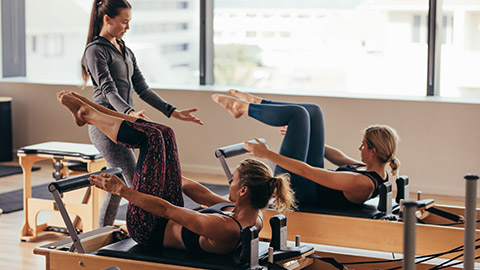
In this day and age, where people are much more sedentary, you will find many clients have mobility issues. Incorporating some mobility into our clients' routines is important. A home-based mobility routine is one way to ensure our clients are working in this area. In addition to improved mobility - core strength, balance, and stress reduction are all other benefits of this type of exercise. Some examples of mobility training include:
- Yoga is a form of exercise focusing on stretching, breathing, and meditation. It can improve flexibility, balance, and stress reduction.
- Pilates is a form of exercise focusing on core strength, posture, and alignment. It can improve flexibility, muscle tone, and body awareness.
Ultimately, the type of workout programme you choose will depend on the client's goals, schedule, and individual preferences.
Layout
There are many different programme designs within the health and fitness industry to choose from. Big, bright, and beautiful designs to clean, tidy, and simple. Find out what works well for both you and your client and represents your brand.
If you work within a gym facility, they may ask you to use the template they have selected, or you may have free reign. Regardless of design, a well-designed programme:
- contains all the essential components.
- can be easily performed by the client or another trainer in your absence.
Give your programme a title – this keeps the document looking professional and provides structure. E.g., “Jen 2-day Split Training Programme”. Start by including essential client information so you and other trainers know whose programme it is.
You may wish to include the client’s goals to serve as a frequent reminder to keep them motivated and on track. It can also be helpful to write a workout summary. You may combine the goal into the summary. Then include a weekly summary (the programme skeleton).
Here’s what this might look like for a weight loss goal:
| Name | Megan Davis |
|---|---|
| Main goal | Increase overall strength and endurance |
| Workout type | Full body |
| Programme duration | 6 weeks |
| Days per week | 3 |
| Time per workout | 40 minutes |
| Sunday | Monday | Tuesday | Wednesday | Thursday | Friday | Saturday |
|---|---|---|---|---|---|---|
| Rest | Full body circuit | Rest | Full body circuit | Rest | Full body circuit | Light cardio |
Select and order exercises
After drafting the programme skeleton or broad outline, you want to work through the finer points including exercise selection and order.
Use your knowledge of exercise selection and training principles to appropriately select and order exercises for effectiveness and relevancy to the client’s goals. Let’s look at some general guidelines.
- Focus on the effectiveness and relevance of the exercises rather than the number of exercises. A workout consisting of vast numbers of complex exercises is not necessarily superior to a simpler workout using fundamental compound movements.
- Pay attention to scalability. Which exercises can be adjusted as the client gains strength and endurance?
- Ensure that all primary joint actions and primal movement patterns are covered.
- Prioritise large before small. Remember that compound exercises will return better bang for your buck than isolation exercises.
- Be realistic about your strengths as a trainer and avoid training clients on modes or equipment that you are not an expert in.
- Consider the workout and schedule as a whole. Think about how each exercise and session affects the others (Spraul, 2021).
Finally, ask yourself if the programme is balanced. An unbalanced programme can lead to several issues, including poor results, client boredom, postural issues, and even injury. Keeping specificity in mind, it is really important to ensure that a client's routine is balanced and any weight training programme ensures muscle group balance. Think about:
- Cardio vs weights
- Upper body vs lower body
- Agonist vs antagonist
- Free weights vs machines
- Barbells vs dumbbells
- Closed chain vs open chain
- HIIT vs Low Intensity Steady State (LISS)
An example would be if a client just trained their chest and did nothing for their upper back (antagonist), they would develop a kyphotic (rounded back) posture which can create chronic injuries in the future.
Watch
Have a look at this short tutorial when Ben talks through the layout for a basic program for a client.
Successful achievement of client goals will largely be determined by correct manipulation of resistance training variables. These variables include volume (sets and reps), intensity (load), tempo, rest intervals, and frequency.
The variables
A basic resistance programme should have at a minimum the following variables:
- Sets
- Reps
- Load
- Rest
You could also include:
- Tempo
- Intensity/RPE
Reps
A rep is one complete exercise movement. Training volume is prescribed according to the number of repetitions (or reps) per set. Reps can be classified into 3 approximate ranges:
- Low (1 – 5)
- Moderate (6 – 12)
- High (15 or more)
Low reps are optimal for increasing muscle strength, with minimal benefits to hypertrophy. Moderate reps are beneficial for hypertrophy. And high reps are best for achieving adaptations in muscular endurance.
Sets
A set is a group of consecutive repetitions of a specific exercise, with a rest interval in between sets. Using multiple sets over single sets maximises muscle strength and hypertrophy.
As a general guideline, there should be 2 – 4 sets per exercise.
Load
Load (or intensity) has the greatest influence on muscle hypertrophy and strength. It can be determined by repetition maximum (RM) - the maximum amount of weight lifted with correct technique for a given number of repetitions. E.g., 5RM is the max amount lifted with correct technique for 5 reps.
Intensities of 90-100% of 1RM are beneficial for goals related to muscular strength. 65-85% 1RM is optimal for muscular hypertrophy goals. Lower intensity of approximately 60% 1RM is sufficient for endurance-related goals.
Rest intervals
A rest interval is the length of time between the end of one set to the start of another set or exercise. Rest periods can have a significant influence on the adaptive response to resistance training and are largely related to intensity (load) applied.
Rest intervals can be classified into 3 approximate ranges:
- Short (30-60 seconds or less)
- Moderate (1 - 2 minutes)
- Long (3 minutes or more)
Short rest periods are best for training muscular endurance, where you want light loads at high repetitions.
Moderate rest periods are beneficial for hypertrophy training with moderate reps of moderate-to-heavy loads.
Long rest periods are beneficial for strength and power. Exercises are performed with heavy loads. Longer rest periods allow energy systems to be replenished (Cooke, n.d.).
Tempo
Tempo is the speed at which reps are performed and divided into 3 contractions:
- Eccentric (lowering)
- Isometric (static)
- Concentric (lifting)
Tempo is expressed in seconds, in 4 parts: eccentric – pause – concentric – pause. E.g., 3-1-2-1 means 3 second eccentric lowering, 1 second isometric hold in the bottom position, 2 second concentric raise, a second isometric hold in the top position.
Assigning variables
The following table summarises general guidelines for assigning volume and rest based on training goal.
| Training goal | Reps | Sets | Rest |
|---|---|---|---|
| Muscular endurance | 12+ | 1-2 | 30-60 seconds |
| Toning and shaping | 10-15 | 2-3 | 1 minute |
| Hypertrophy | 6-12 | 3-4 | 1-2 minutes |
| Muscular power | 6-8 | 3-4 | 3-5 minutes |
| Muscular strength | 1-6 | 3-5 | 3-5 minutes |
Recording variables
Any well-designed programme, once explained to a client, should be able to be picked up by anyone and performed safely. This means that each programme should be clear, well written, and leave no confusion about how and when to perform each movement.
If you are absent and another trainer is covering for you, they should be able to read and understand the programme easily. Clients will be expected to perform their programme on days without you, so they need to be able to understand what it says as well.
Including tips or notes can assist clients to remember key coaching points when you are not there.
The measure of your influence as a personal trainer is not how the client trains when they are with you – it’s how they train when you are not there.
Let’s look at the 2-day split programme we introduced in Exercise Selection. Note how all the essential information about variables is recorded, alongside coaching notes. This time, we’ve included the second day.
Jen 2-Day Split Training Programme
| Sunday | Monday | Tuesday | Wednesday | Thursday | Friday | Saturday |
|---|---|---|---|---|---|---|
| Yoga | Weights - lower | Bootcamp | Weights - upper | Bootcamp | Weights - lower | Long run |
Weights - lower
Warm-up: Cycle 15 Calories
Stretches: Dynamic Stretches (Lunge Hug, Side Squats, Walk the dog)
Activation: Glute Bridge with abduction x 10 reps
Potentiation: 10 reps of BB squat with just bar
| Exercise | Rest | Set 1 | Set 2 | Set 3 | Load | Notes |
|---|---|---|---|---|---|---|
| Barbell back squat | 90s | 10 35kg |
8 40kg |
6 45kg |
Hinge through hips | |
| Bulgarian split squat | 60s | 10 7kg |
10 7kg |
Drive through heels | ||
| Leg press | 10 83kg |
10 83kg |
Soft lock 15kg per side |
|||
| Dumbbell Romanian Dead Lift | 60s | 10 12kg |
10 12kg |
10 12kg |
Keep back flat | |
| Jump squats | 30s | 30s | 30s | 30s | As much height as possible | |
| Dead hang | 40s | 40s | Brace core, feet forward | |||
| Weighted plank | 40s 5kg |
40s 5kg |
Stay square |
Weights - Upper
Warm-up: Rower 500m
Stretches: Dynamic stretches (thread the needle, cat/cow, back pats)
| Exercise | Rest | Set 1 | Set 2 | Set 3 | Load | Notes |
|---|---|---|---|---|---|---|
| Barbell benchpress | 90s | 6-10 | 6-10 | 20kg | Full ROM | |
| Dumbbell flyes | 12 | 12 | 5kg | Big hug | ||
| Inverted row | 60s | 8 | 8 | Elbows close | ||
| Upright row | 8-10 | 8-10 | 15kg | Lead with elbows | ||
| Curl'n'press | 60s | 10 | 10 | 4kg | Twist through ROM | |
| Dumbbell kicks | 10 | 10 | 3kg | Elbows high | ||
| Medicine ball crunch | 60s | 10/10 | 10/10 | 3kg | Eyes on ceiling | |
| Medicine ball Russian twist | 10 | 10 | 3kg | 45 only | ||
| Medicine ball leg raises | 10 | 10 | 3kg | Shins to ball |
Programme Notes:
This programme is a progression from the full body programme you have been following. It will allow you to dedicate a bit more focus and energy to individual areas.
Ensure you stretch in between sets. Aim to increase the load as you get more accustomed to the movements.
We will change this programme in another 6-weeks' time.
Warm-up, cool-down, and stretches

The warm-up is an essential programme component. It helps reduce muscle soreness by ensuring muscles are well supplied with oxygen and reduces the risk of injury by elevating the heart rate and body temperature slowly to minimise the stress on the heart.
Low-intensity cardio exercises are a standard warm-up activity to help prepare the cardiovascular and respiratory systems for the upcoming activity. As discussed in Exercise Prescription A, after the cardio warm-up, it's important to do some activation and mobilisation work to ensure clients are fully ready to exercise
A post work-out cool-down is just as important as a warm-up. Once the main body of the workout (conditioning component) has been completed, the heart rate remains elevated, requiring time to return to resting. Abruptly ceasing exercise may create other issues including a build-up of lactic acid, which can lead to muscle cramping and stiffness or pooling of the blood in the veins leading to damage of their structural walls.
Implementing stretching within a programme is effective as it supports decreasing heart rate and stretching muscles, preparing them for rest and recovery. Depending upon the exercises selected and the client's training level, stretching may be performed in the warm-up or the cool-down session, or both.
Examples of cooling down practices may include:
- Low-intensity exercises
- Light body weight exercises including lunges and squats
- Foam rolling to increase blood flow and the breakdown of lactic acid and knots within the muscle
- Static stretching
Resistance training, also referred to as strength or weight training, involves performing physical exercises with the aid of weights (body weight or equipment-based weights) against gravity to build, shape, tone, and improve muscular strength and endurance. It is associated with the use of weights (for example, barbells or dumbbells). However, resistance bands, body weight (resistance against gravity), and some exercise machines can also be used.
Resistance training forms a fundamental component of any exercise programme. It will also form the bulk of a personal trainer’s skillset in the typical gym environment.
The main components of a resistance training programme include:
- Exercise selection
- Frequency
- Order of exercises (exercise arrangement)
- Load (weight)
- Volume: reps and sets
- Rest periods
- Variation
- Progression and regression
When designing a resistance training programme, a client will require advice about what type of resistance training they should perform to achieve their goals. The following are 3 common goals that clients typically wish to obtain.
Resistance training can provide the body and mind with the following benefits:
- Improved strength and muscle tone
- Improved flexibility and balance
- Improved weight management (either increase or decrease depending on goals)
- Improved body recomposition
- Greater stamina through improved muscular endurance
- Decreased risk of injury
- Improved prevention or control of chronic conditions (for example, diabetes, heart disease, obesity)
- Improved posture
- Increased bone density
- Improved sporting performance
- Improved self-esteem, self-confidence, and mental health
Forms of resistance training
With a large variety of resistance training available, finding a wide range of equipment to support and enhance the training is no surprise. Becoming familiar with a range of resistance training equipment that can be included in programme design is important. Equally as important is knowing how to competently demonstrate the use of each piece of equipment safely and effectively for your client. See the following image slides to find out the different types of resistance training that can benefit in strengthening the muscles, whether at home or the gym.
Variations and alternate exercises
Resistance training encompasses a wide variety of exercises that aim to target different muscle groups and meet the needs of various clients with different skill levels, needs, and goals. To ensure a programme is suitably designed, an excellent trainer will have a bank of exercises both in their programme and up their sleeve. These will need to be called upon should a client be either unable to perform a particular exercise, require a more advanced exercise technique, or equipment is unavailable.
These situations will require variations or alternate exercises, typically in the form of regression (easier) or a more progressive (advanced) exercise. Very rarely will a programme go 100% as planned. Therefore, it is essential to come prepared with alternative exercises in mind to ensure the flow of the session and an appropriate exercise selection, ensuring the client remains safe in achieving their goals in a specific manner.
The following table provides a selection of example progressions and regressions of different movements, along with alternatives that may be used depending on an individual’s skill levels.
| Movement | Progression | Regression | Alternative exercise |
|---|---|---|---|
| Barbell back squat | Overhead squat | Goblet squat | Leg press |
| Walking lunges | Bulgarian split squat | Static lunge | Step up |
| Barbell deadlift | Deficit deadlift | Kettlebell deadlift | Hip thrust |
| Barbell bench press | Dumbbell bench press | Machine chest press | Dumbbell flyes |
| Pull-up | Muscle up | Banded pull-up | Lat pulldown |
Spotter
A spotter describes a person supporting the other during heavy resistance training exercises. A spotter serves an important role in observing technique and, equally as important, ensuring safety. E.g., for exercises such as a barbell bench press, a spotter can support lifting the barbell if the individual struggles to complete any more reps safely towards the end of the set.
Spotting checklist:
- Know good exercise techniques and give feedback on form.
- Know proper spotting technique
- Don’t over-assist (your aim is to help your client through the sticking point and keep movement going)
- Be sure you are strong enough to assist the lifter with the load being lifted or get help
- Know how many reps the lifter intends to do.
- Be attentive to the lifter at all times.
- Stop the lifter if technique is dangerously incorrect or they break form.
- Know a plan of action if an injury does occur (hope for the best, plan for the worst!)
Video tutorial
In this video tutorial, Ben talks about resistance training and programme design. It's an opportunity to recap what you've read about programme design and do some practical activities. Total play time is 27m so grab a cuppa and get comfortable. Or jump to the sections you want to learn more about.
- 0:30 Benefits of resistance training
- 4:30 Anatomical terminology
- 7:11 Resistance training terminology
- 7:42 Agonist and antagonist
- 10:24 Synergist and fixator
- 13:40 Concentric and eccentric
- 17:40 Compound and isolation
- 20:08 Open and closed chain
- 23:27 Primal movement patterns
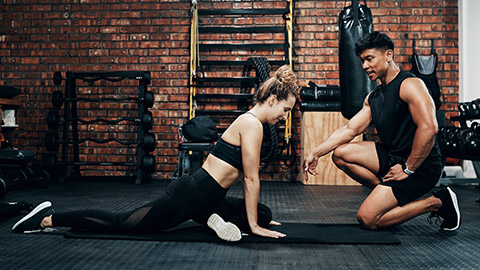
For many people, committing to a training programme typically does not last long term. Boredom can kick in along with other demotivators and distractions which can lead to clients reducing then discontinuing their training. The important question each fitness professional should ask themselves, how can I ensure each training session is exciting and valuable to ensure the client continues working towards their goal?
Working with a personal trainer in itself can be a huge motivator for some people. However, other strategies should also be implemented within the training programme to support the client in remaining motivated and eager to progress. Some of these include:
- Ensure the training plan is realistic. The trainer will start off with light activity and gradually increase duration and intensity as the client progresses.
- Ensure the client enjoys the training exercises prepared for them. The personal trainer should tailor the training plan to suit them and what they enjoy, as well as encourage them to do exercises that work best to achieve their goals.
- Develop goals (both short and long term) that are achievable and realistic. As the client sees themselves achieving small goals, it will boost their motivation to continue.
- Enforce flexibility to cater to the client’s personal requirements. Everybody is different and their commitments may change from time to time, so being able to train at a time/location that is suitable to the client will encourage them to continue.
- No time-wasting! Minimise time-wasting and maximise results. Clients want to have effectively designed programmes that provide them with the right tools to maximise results.
- Develop a positive relationship with your client where they can feel comfortable discussing any concerns and struggles. Develop a plan that minimises the risk of injury.
- Do not overdo it. If a trainer develops a plan that consists of high intensity exercise 5 days a week, this can increase the risk of injury and become a demotivator. The training plan needs to consist of high intensity, low intensity, and stretching days to support the client’s rest and recovery.
Programme Monitoring and Re-evaluation
A health and fitness professional will typically write hundreds of programmes in their lifetime and perform just as many programme re-evaluations. Why? Self-improvement.
Guaranteed, any programme which has been well designed behind the scenes, ready and waiting for the client to walk in and begin their first session, will likely not run 100% to plan. This could be for a multitude of reasons that may include the following:
- The client is late
- The client is tired
- The client slept funny and has a sore neck/back
- The client didn’t sleep well due to stress and is feeling tired
- The machine you wish to use is taken by another member
- The client is feeling unwell
There are many other reasons which cannot always be controlled.
A large part of the trainer's role is to be prepared. To continue delivering amazing sessions to clients, it’s important to monitor and evaluate the programme and the services given to the client both during and after each session. An example of this may include, seeking verbal feedback from the client through these stages.
Before the session
Ask yourself:
- Is the prescribed programme at the correct level for the client?
- What will the plan be if someone is using the equipment required, what is the back-up plan?
During the session
Ask yourself:
- Is the client performing the exercises correctly? If the client is struggling it is the responsibility of the trainer to find an alternative way to communicate the requirements. For instance, adjusting language, visual demonstration and so on.
- Is my verbal delivery suitable for the client, do I need to rephrase my wording?
After the session
Ask yourself:
- Did the session run as planned, or did it require any programme adjustments?
- Did anything happen within the session which I was not expecting/prepared for?
- Did I have enough alternative exercises prepared to ensure the session remained smooth in the event of other people using the equipment which was required or the inability of the client to perform the planned exercise efficiently and safely?
- Was my verbal delivery correctly pitched for the client?
- Could my demonstrations be tweaked in future to better support clients?
- Was the programme clear? Did the client understand what exercises were to be performed and how to perform them?
- Was there adequate time to get through the programme?
Self-evaluation versus client feedback
Programme monitoring and re-evaluation can and should be performed through self-evaluation and client feedback. Self-evaluation is not commonly practised within the industry. Why would an awesome program need to be self-evaluated? For the reasons above, that is why! Any professional trainer worth their salt would want to continuously improve by reflecting on what they can control within a session.
Another extremely effective way to ensure a smooth session and programme design is to seek feedback from the client. This can be obtained by watching them perform the exercises and gauging their RPE and listening to their verbal feedback. It can also be further obtained by asking them after the session what they felt worked well and what they felt could work better. There is no pride lost in asking for feedback. In fact, both trust and respect are gained by asking for further information to ensure they have a safe and effective experience. This type of professional conduct will be what sets you above the rest.
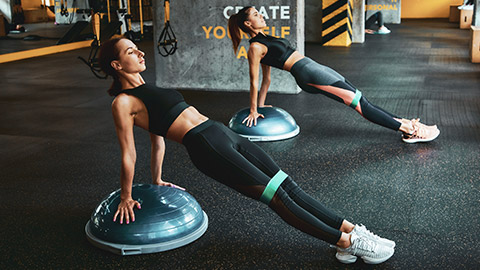
The term periodisation refers to the division of a training program split into smaller, typically more manageable components with steps to meet the overarching goal. The concept of periodisation goes hand in hand with the GAS principle, providing a suitable stimulus (stress) at regular intervals with periods of phases to allow the body enough time to adapt before increasing the stimulus or introducing a new one. A well-designed periodisation programme will avoid overtraining and promote successful and effective enhancements in performance.
Typically, periodisation of a programme occurs when a programme is of a minimum a year in duration, known as a macrocycle, which is then broken down into smaller components or phases, which are referred to as mesocycles. The smaller components within each mesocycle are referred to as microcycles which are typically weeklong. Within those are the individual workout sessions. The following image illustrates the flow of the cycles of periodisation.
